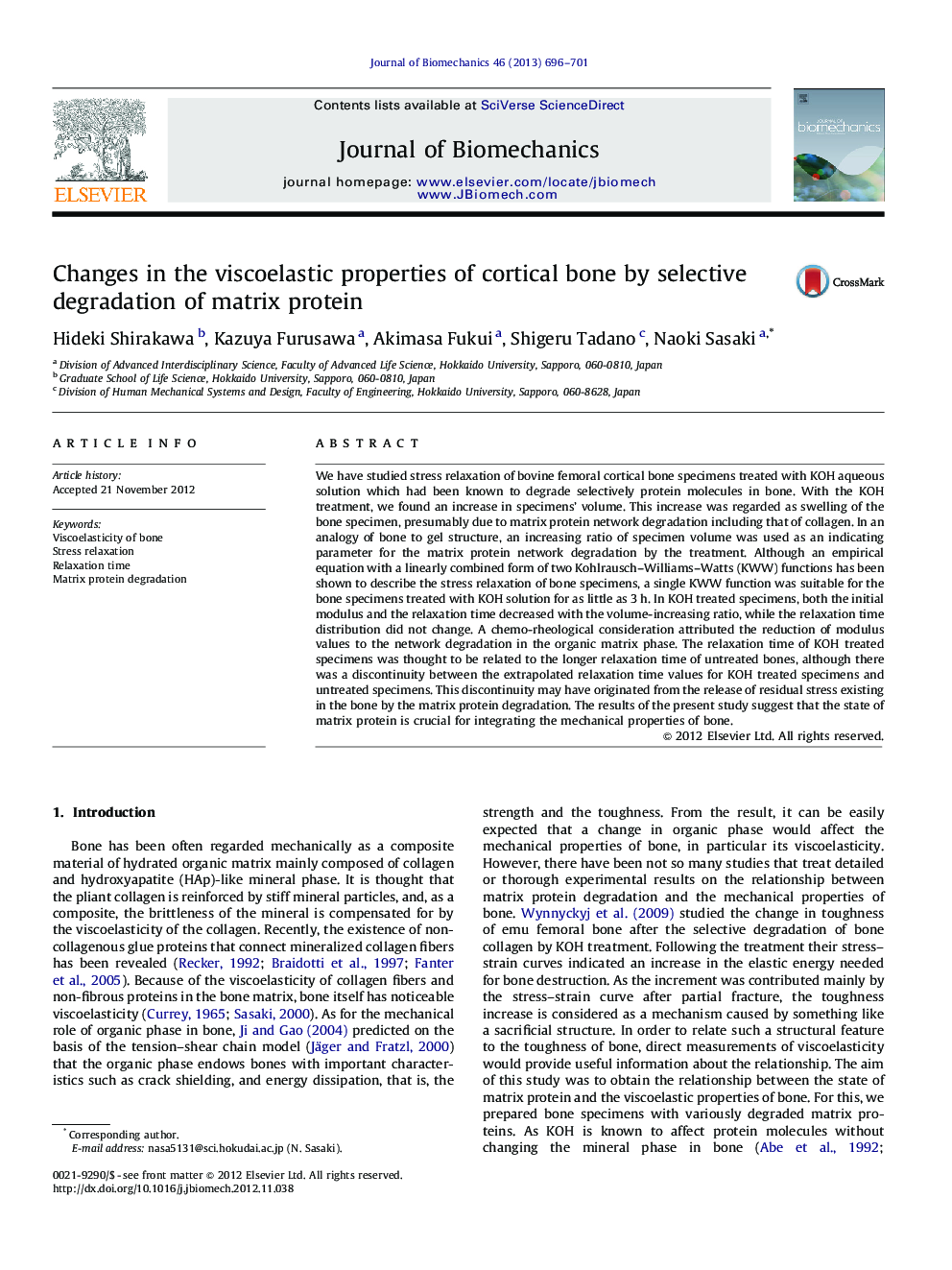| Article ID | Journal | Published Year | Pages | File Type |
|---|---|---|---|---|
| 10432931 | Journal of Biomechanics | 2013 | 6 Pages |
Abstract
We have studied stress relaxation of bovine femoral cortical bone specimens treated with KOH aqueous solution which had been known to degrade selectively protein molecules in bone. With the KOH treatment, we found an increase in specimens' volume. This increase was regarded as swelling of the bone specimen, presumably due to matrix protein network degradation including that of collagen. In an analogy of bone to gel structure, an increasing ratio of specimen volume was used as an indicating parameter for the matrix protein network degradation by the treatment. Although an empirical equation with a linearly combined form of two Kohlrausch-Williams-Watts (KWW) functions has been shown to describe the stress relaxation of bone specimens, a single KWW function was suitable for the bone specimens treated with KOH solution for as little as 3Â h. In KOH treated specimens, both the initial modulus and the relaxation time decreased with the volume-increasing ratio, while the relaxation time distribution did not change. A chemo-rheological consideration attributed the reduction of modulus values to the network degradation in the organic matrix phase. The relaxation time of KOH treated specimens was thought to be related to the longer relaxation time of untreated bones, although there was a discontinuity between the extrapolated relaxation time values for KOH treated specimens and untreated specimens. This discontinuity may have originated from the release of residual stress existing in the bone by the matrix protein degradation. The results of the present study suggest that the state of matrix protein is crucial for integrating the mechanical properties of bone.
Keywords
Related Topics
Physical Sciences and Engineering
Engineering
Biomedical Engineering
Authors
Hideki Shirakawa, Kazuya Furusawa, Akimasa Fukui, Shigeru Tadano, Naoki Sasaki,
